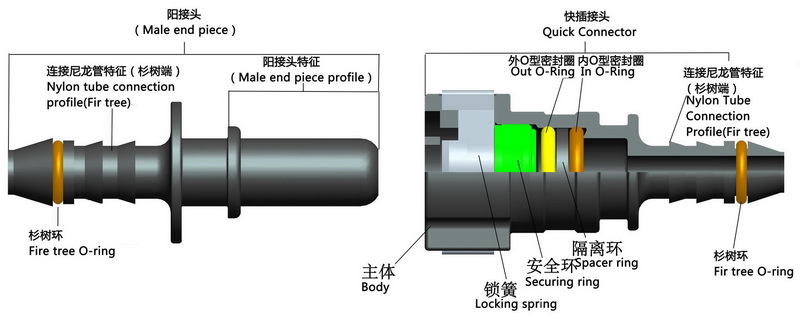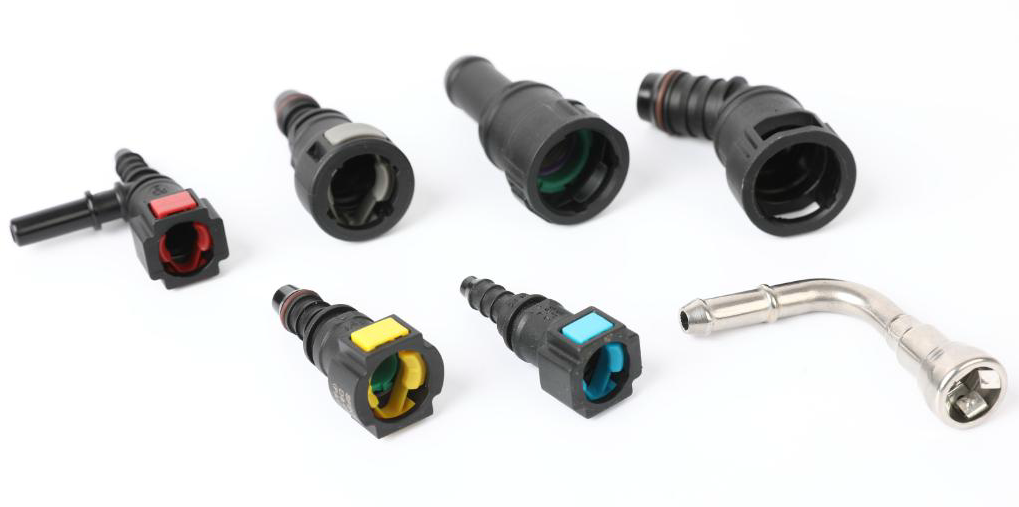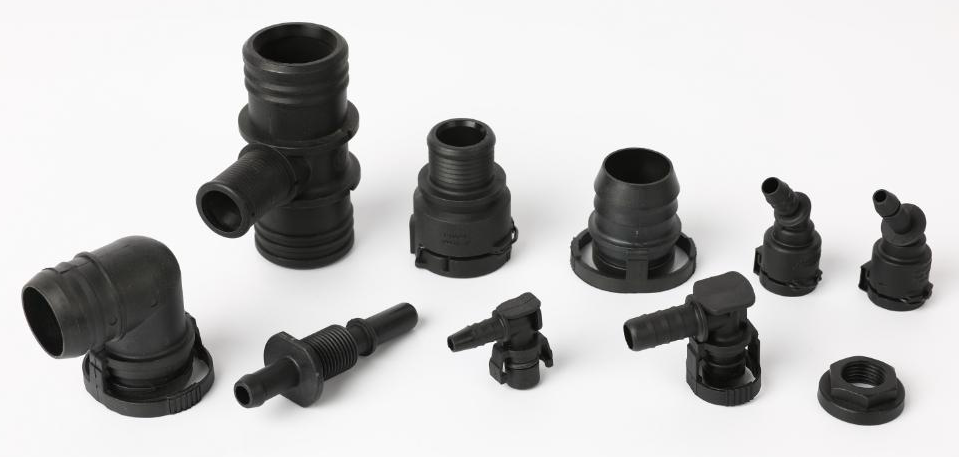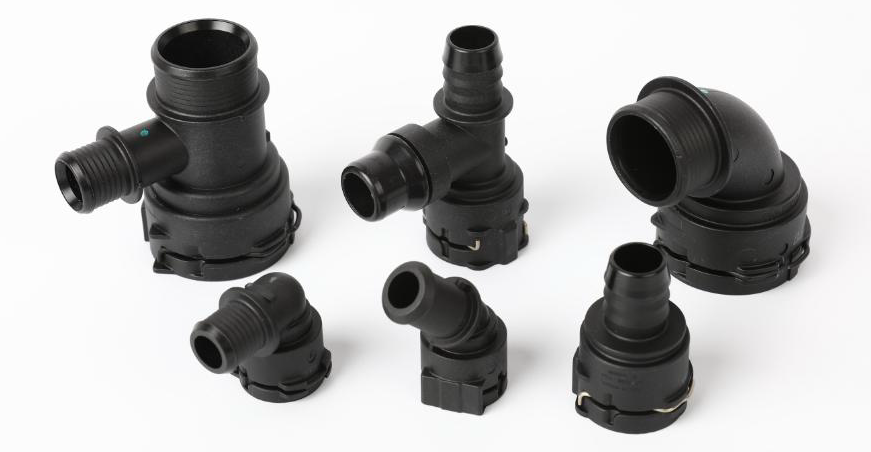In gas chromatography, injection is one of the main sources of quantitative analysis error. Because the principle, structure, materials used, temperature during injection, injection volume, injection speed, and tools for injection will have a direct impact on the qualitative and quantitative repeatability and accuracy of GC analysis. In the actual analysis, due to the different gas, liquid, solid and state of the sample, the analysis purpose is different, the requirements are different, and the sampling system for GC is various. For example, the atmospheric gas sample has a six-way valve gas injection or injection needle. There are two types of cartridge injection. Below we only summarize the gas injection six-way valve injection technology and skills for the reference of workers who often do gas analysis.
The atmospheric pressure gas sample is injected and injected through the injection septum by a medical syringe (1 ml to 5 ml). It is simple and flexible, but there are samples backflushing and leakage when the defects are present, and the quantitative error is large, and the repeatability is generally above 2.5%. This is because the pre-column pressure is higher than the ambient atmospheric pressure and the sample gas will leak along the inner wall of the syringe. At this time, although it can be compensated by coating a high-temperature vacuum silicone grease on the inner wall of the tube to improve the airtightness, the adsorption effect of the silicone grease on the organic matter may occur, and the quantitative error is still large. If the volume is injected with a six-way valve, it is not only easy to operate, but also the result is more accurate. Reproducibility can be less than 0.5% as long as the operation is reasonable and certain skills are mastered. It is easy to adjust even if the ambient temperature, pressure changes or different corrections. In addition, the six-way valve can also be used directly for high pressure gas injection.
1. Analyze how the working principle, structure and sample direct contact valve material you are using are suitable for you.
Analysis requirements;
2. Since the airtightness of the valve is very different (0.1~0.6Mpa), can you ensure that there is no air leakage when you connect to your pneumatic system? Otherwise, it will not only affect the stability of the instrument, but also cannot guarantee the weight of the instrument. Present
3. Quantitative tube volume: As small as possible when the sensitivity meets the requirements, the maximum quantitative tube volume should be limited to 10% when the number of trays drops during the experiment. Otherwise, the injection volume is further increased, and only the peak width is increased without increasing the peak height, or the injection volume when the chromatographic peak width is substantially not broadened is the maximum quantitative tube volume, which is generally not more than 5 ml for the packed column.
4. At present, in order not to affect the liquid injection injection, the six-way valve is often connected in series at the inlet of the vaporization chamber. Obviously, this connection increases the dead space. When the analysis requirements are high, Zui crosses the vaporization chamber directly into the column or puts the six-way valve
The gas outlet is inserted directly into the column head through the injection pad;
5. At ambient temperature, when the sample components are likely to condense or contain a small amount of liquid gas sample, the temperature effect of the six-way valve (including the pipeline introduced into the instrument) should be considered: a) put the valve into the column box; b) separate control Warm heating
6. Sample pretreatment problems: a) Prevent dust and mechanical particles from entering the valve to affect air tightness or normal operation; b) Avoid contamination of the valve by high boiling impurities;
7. Sampling method: In order to prevent possible contamination or interference of the gas components in the environment, the zui is driven into the quantitative tube through a large syringe needle like a liquid injection. It is not easy to use a variety of hoses or plastic pipes to access this: a) the pipe itself is not pure; b) in principle, all pipes will have an osmotic effect, which is especially disadvantageous for trace analysis.
8. Sampling tools: At present, metal coating air bags, large syringes or special gas cylinders are commonly used. Unless the requirements are extremely low, bladders, plastic bags, etc. are rarely used at present;
9. Quantify the air pressure of the sample in the tube: Since the gas content is directly related to the air pressure, in order to ensure the repeatability of each injection, the pressure of the quantitative tube should be balanced with the atmospheric pressure after sampling, and the balance is generally 20~30 seconds after sampling according to experience. Yes;
10. Flushing the volume of the sample tube: Due to the different concentrations of the gas sample being analyzed, in order to prevent the higher concentration and then enter the lower concentration sample, the interference of the original high concentration gas in the tube is quantified. When sampling, it is required to flush the quantitative tube with a new sample gas, and the flushing volume is not less than 5 times the quantitative volume according to experience. The actual impact can also be judged and selected by the reproducibility of the experimental peaks;
11. At what time after the injection, turn the six-way valve back to the sampling position?
Depending on the analysis, such as the volatility of the baseline after injection, the qualitative and quantitative repeatability is determined. According to experience, after a few seconds of injection (before the first peak has not yet appeared), the valve is rotated back. The sampling position is better. At this time, it is easy to eliminate the poor airtightness of the valve and the excessive volume of the quantitative tube to affect the baseline or the peak;
12. If the valve is found to have poor air tightness or is contaminated, experienced operators can remove and wash the six-way valve, but it should be noted that the sealing surface of the valve body and the valve disc is only allowed to be wiped with a soft cotton fabric, and the solvent is applied to the volatile one. Alkane, acetone, tri-lv methane, etc., washed and dried with dry air. However, special care should be taken that the gas six-way valve injection system for ECD should avoid the use of halogen-containing hydrocarbons (eg, three lv methane) as cleaning agents, otherwise these interfering solvents will exist at trace levels for a long time. There is a strange peak.
Shinyfly Quick Connector is composed of body, in O-ring, spacer ring, out O-ring, securing ring and locking spring. When inserting another pipe adapter(Male End Piece) into the connector, since the locking spring has certain elasticity, the two connectors can be connected together with the buckle fastener, and then pull back to ensure the installation in place. In this way, the quick connector will work. During maintenance and disassembly, first push in male end piece, then press locking spring end till expansion from the middle, the connector can be easily pulled out. Lubricated with SAE 30 heavy oil before re-connecting.
Shinyfly Quick Connectors are designed and produced strictly in accordance with the SAE J2044-2009 standards (Quick Connect Coupling Specification for Liquid Fuel and Vapor/Emission Systems).
Innovative, secure, "quickfit" - Shinyfly quick connect fittings are made of synthetic materials and suitable for most media fluid transmission systems. Whether it's fuel, cooling water, oil vapor or urea SCR systems, we can always provide you with efficient and reliable connections as well as the best solution.




Quick Connector
Nylon Quick Connector, Platic Quick Connector, Nylon Tube Connector, Assembly Fasterner, Quick Disconnect
Linhai Shinyfly Auto Parts Co.,Ltd. , https://www.chinashinyfly.com